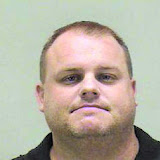Meeting recorded by James Grant Audio Above--Video Coming Soon Takes 5 minutes for meeting to start
Bartlett Adopts Rollback Rate, Old Budget
Link to Posted Agenda's
News Article By Gayle Bielss
A vocal audience challenged the mayor and council at a public hearing for the City of Bartlett budget Monday night. Mayor Pro Tem Arthur Mason was not present.
News Article By Gayle Bielss
A vocal audience challenged the mayor and council at a public hearing for the City of Bartlett budget Monday night. Mayor Pro Tem Arthur Mason was not present.
Mayor Arthur White told the council and audience that if the council did not adopt a budget by the September 30 deadline, the old budget goes into effect. He said it would be monitored closely. White said he was unable to work up a new budget since he did not have an accurate accounting of income and expenses for the previous year.
White stated "they" were working diligently in city hall reviewing checks to see how much went out and what came in for the previous fiscal year.
Former city secretary Diane Evans asked how a tax rate could be passed without a current budget. She said last year (2008) an ordinance had to be passed to go into the next month until a budget was ready.White said he did not know.
City attorney Paige Saenz was present to answer questions.
Ms. Evans and Kathy Jones, also a former city secretary for Bartlett, stated that the budget is supposed to be available 30 days prior to the tax rate hearing. Ms. Jones said the budget was supposed to be available on the counter, and individuals should not have to ask for copies.
Councilwoman Alice Rodriguez said she had asked about a budget and had not received her copy until noon the previous day.
Ms. Saenz said a budget is required to be adopted each year following statutes to adopt the tax rate. She said things need to be done in an orderly fashion to adopt a tax rate. She said cities frequently come back with budget amendments one or twice a year.
Ms. Evans said the way it stands, the public will have no input on the budget. Mayor White said that budget hearings will be held through October with another public hearing at the end of October. Ms. Evans said, so this meeting was for nothing. She said a lot of things could have been changed but were not. White stated, "You created the budget, so I beg to differ." Ms. Evans responded with, it was correct last year, but things have changed since then.
James Grant asked when last year's budget was amended and was told it had not been. He then asked when was the last full year's audit and was told 2005. Grant wanted to know why there had not been an audit. White said Grant would have to ask the previous city secretary. Grant pointed out that the mayor is responsible and culpable. Grant said these are not new questions. White said he had no recollection. White said the information for the auditor was not available. Grant stated that the city is required to have an audit.
Mayor White discussed setting the tax rate at the rollback rate. Ms. Evans asked why go with the rollback rate, what if it's not sufficient for the budget. Who decided on the tax rate? Mayor White said the rate was set by the county, but Ms. Evans insisted that the council had a choice. She asked why choose the lower tax rate? She said the council could choose between the effective tax rate and the rollback rate. As Ms. Evans continued to query the mayor about who picked the tax rate, first he said no further comment, and then said the council is about to vote on it.
Grant inquired about the newspaper of record for the city of Bartlett and asked when the proposed tax rate had been published. White said it was probably not published.
Mayor White stated that since Ms. Evans was released on July 20, there had been one city secretary who stayed 30 days and one who stayed five. Ms. Evans told him that's not her problem, "I'm just trying to get answers you don't want to answer." White told her he did not have the experience she had. When White mentioned Mattie (as city secretary), Councilwoman Alice Rodriguez said the council had not appointed her city secretary and White asked, What's your problem there?
Grant stated that last year's budget still had shortfalls and questioned how one could adopt a budget with shortfalls with a rollback tax rate. White said the council was at fault, him primarily. Grant asked if the council planned to use Plan B and raise utility rates.
Mayor White closed the public hearing promptly at 7:30 p.m. White convened the called meeting at 7:30 p.m. and called for a motion on the tax rate based on the appraised value of property. He read ordinance No. 2009-7 levying ad valorem taxes for use and support of the municipal government of the city for the fiscal year beginning October 1, 2009 and ending September 30, 2010. White stated that the total tax rate should be set at $.5244 on each $100 valuation with $.2749 for maintenance and operation and $.2495 for interest and sinking.
When Mayor White asked for a motion, Councilman Charlie Johnson that he was of the understanding that the current budget would be extended 30 days. He said he felt misled and wanted no part of it.
White asked the council's wishes, stating they had to adopt or disapprove the tax rate. Johnson made the motion to disapprove with a second by Ms. Rodriguez.
Councilwoman Gina Grove asked the city attorney if another ordinance could be created. Ms. Saenz said that the old year's budget went into effect if a new one was not prepared. Saenz said the city was meeting statutory requirements, and extending the budget year was an usual circumstance.
Johnson said, "That the council did not have information that the city was using this budget. Now we have a deadline and have to take whatever is thrown at us."
Once again, Saenz stated that the city was meeting statutory requirements and Johnson said you tell me about the process, but other processes have not been followed. Saenz said the city is trying to do the right thing.
Ms. Evans said the city would be better with the default budget. Three council members voted to disapprove the tax rate with Councilman Reuben Lindemann not voting, since "I don't understand everything being said."
Saenz said the old budget would be extended and that the council should go ahead and establish a tax rate. October 1 starts new budget regardless of what we do, White said.
White reread the ordinance and Lindemann made the motion to approve it based on what was read. His motion died for lack of a second. After White asked the council what they wished to do, Lindemann asked what's our problem, why can't we approve, what's wrong with it? Saenz asked if the council was concerned about the tax rate. Lindemann again made the motion to approve the tax rate with a second by Grove. It passed 3-1 with a yes by Johnson and a no by Rodriguez.
An agenda item regarding invoices for technical services by Lon Hammonds was deleted, since Mayor White said it was pretty much straightened out.
The minutes for the regular meeting on September 21 were approved and the meeting adjourned at 7:50 p.m.
Debbie McKeon
Tribune-Progress
254-527-4424


